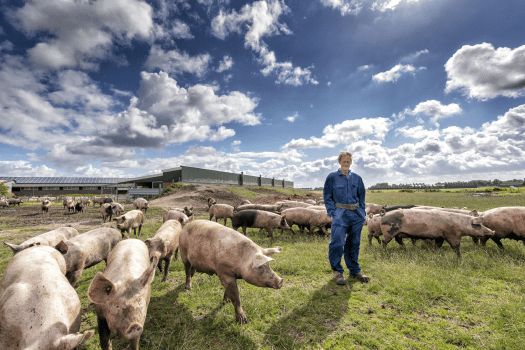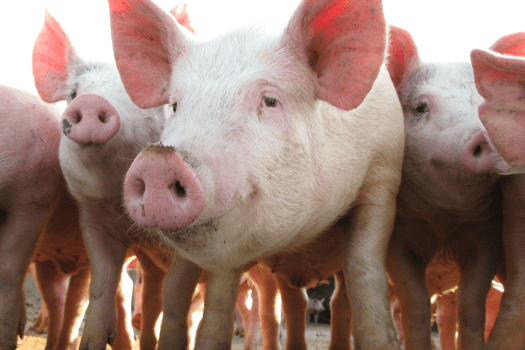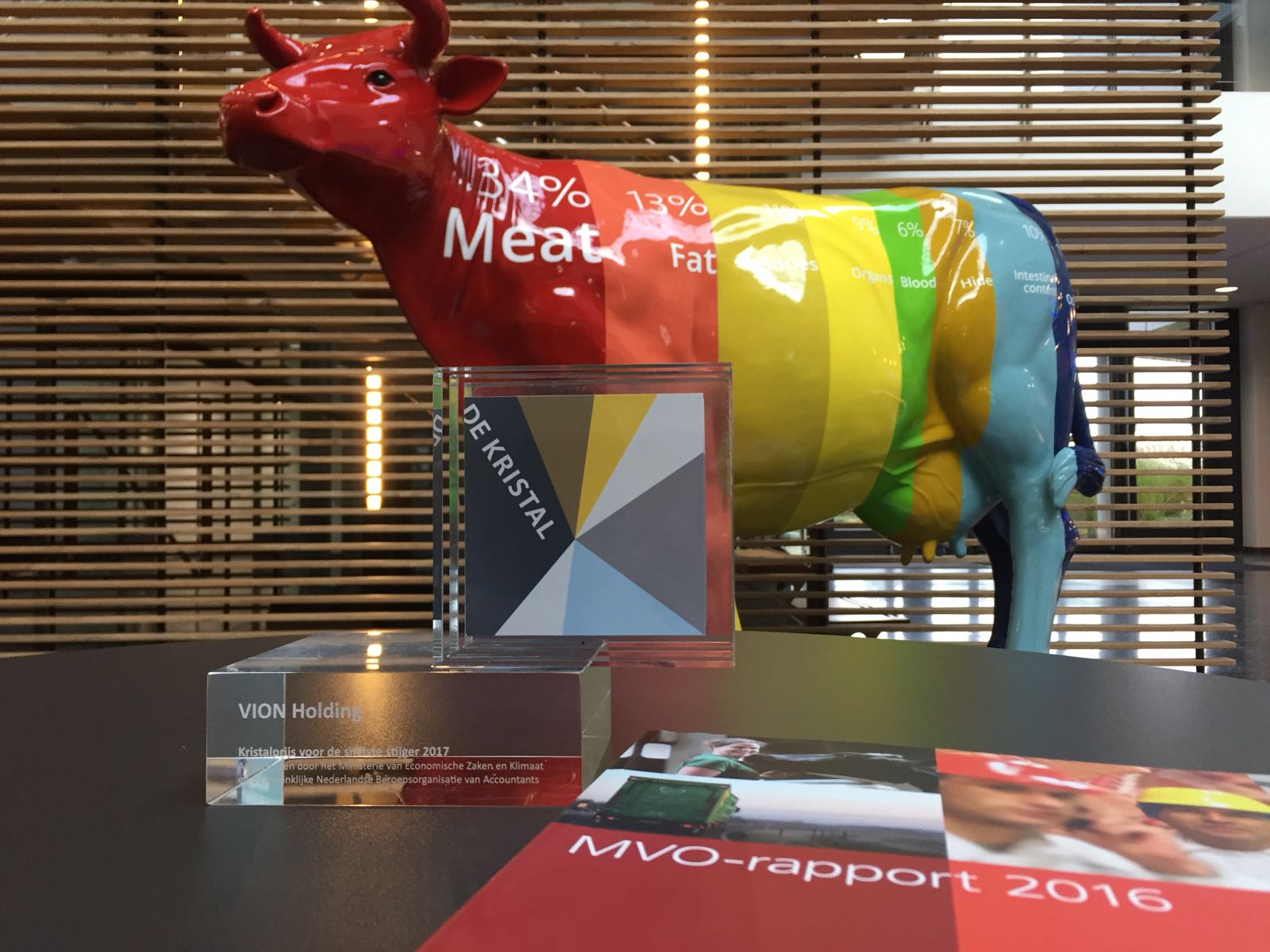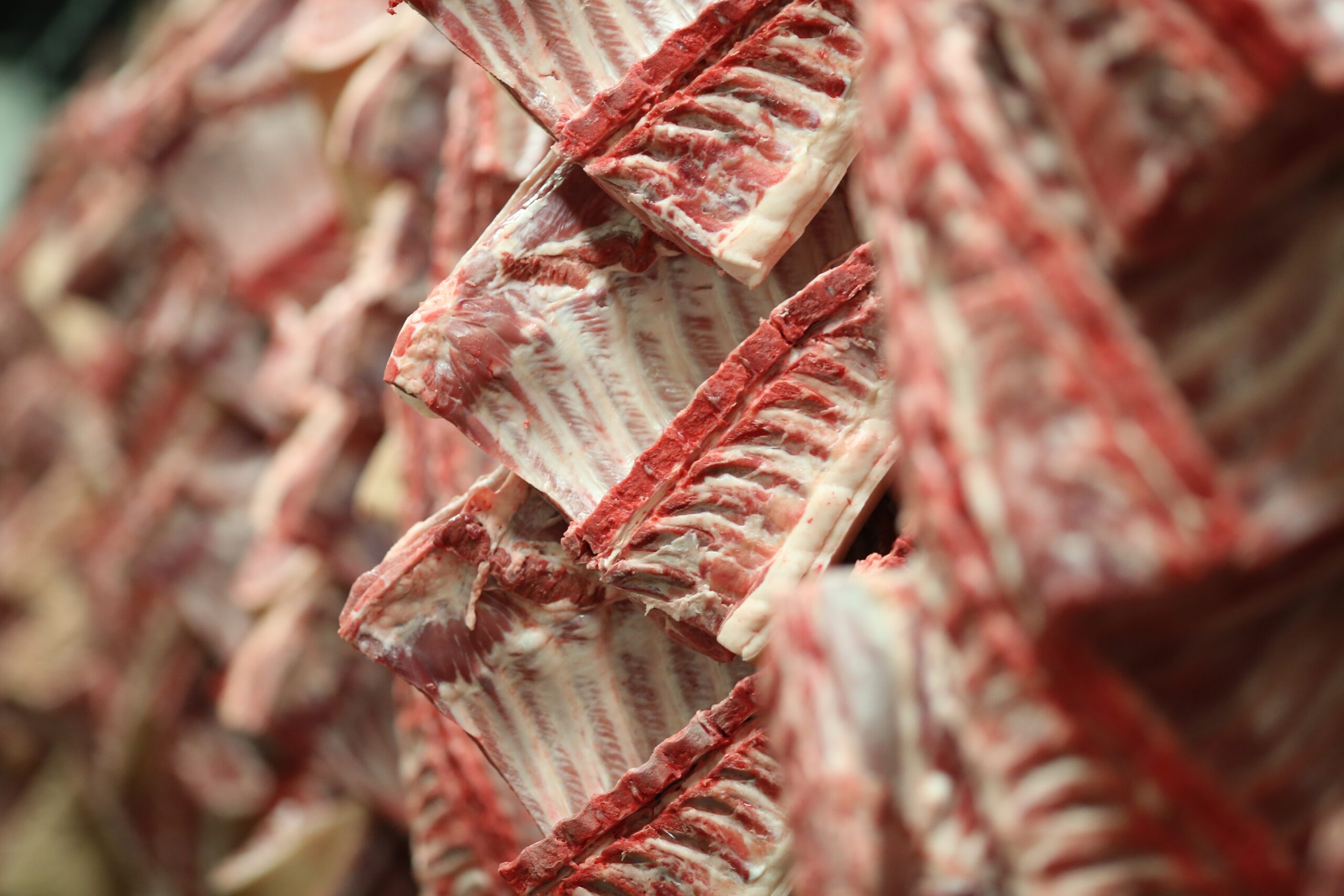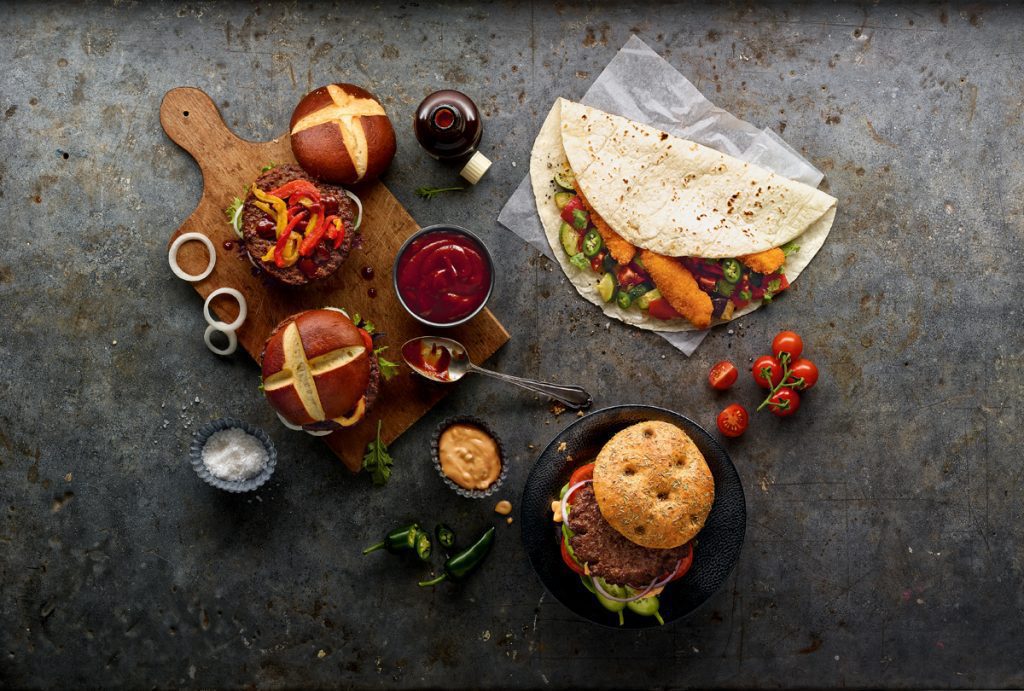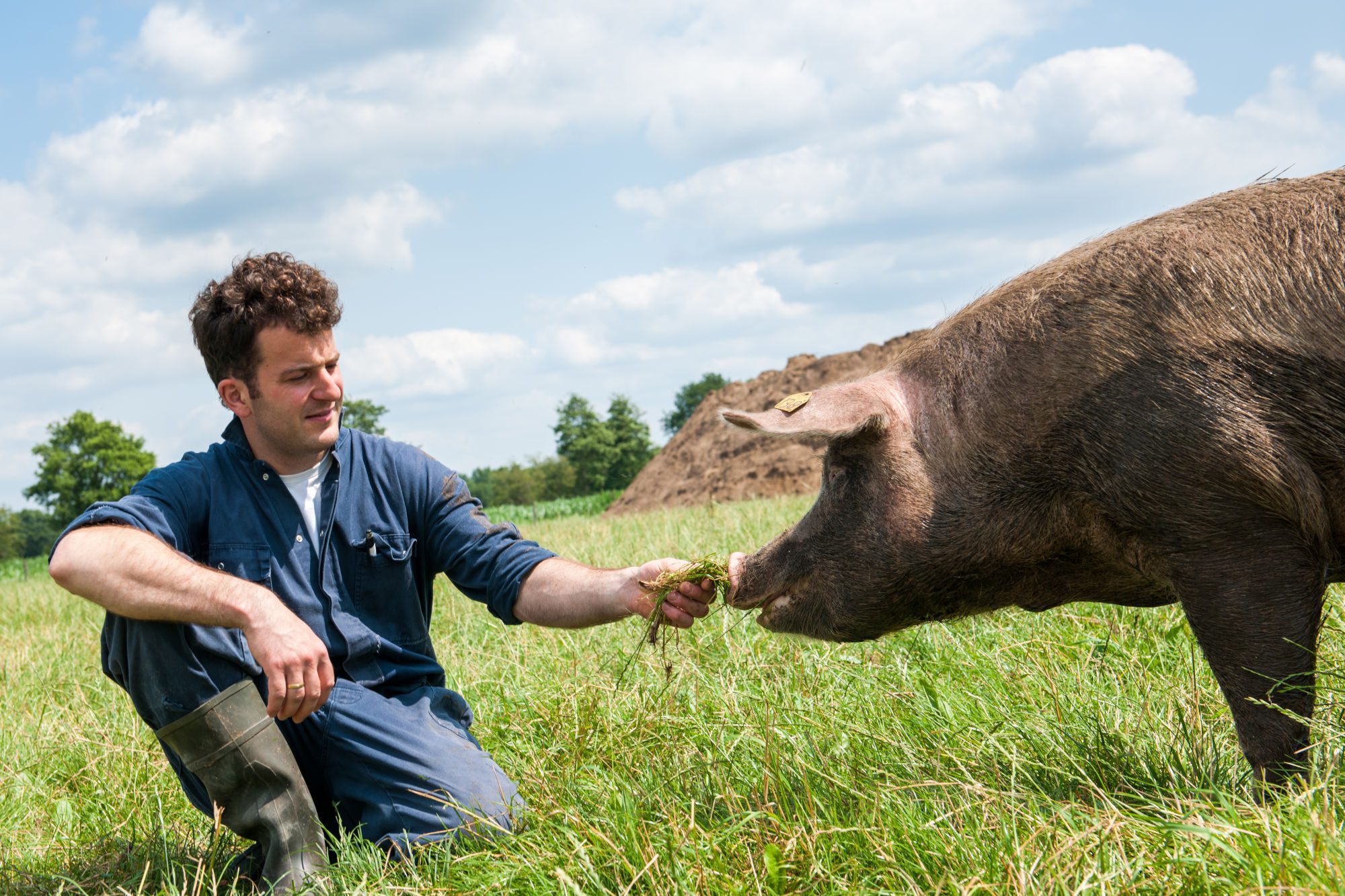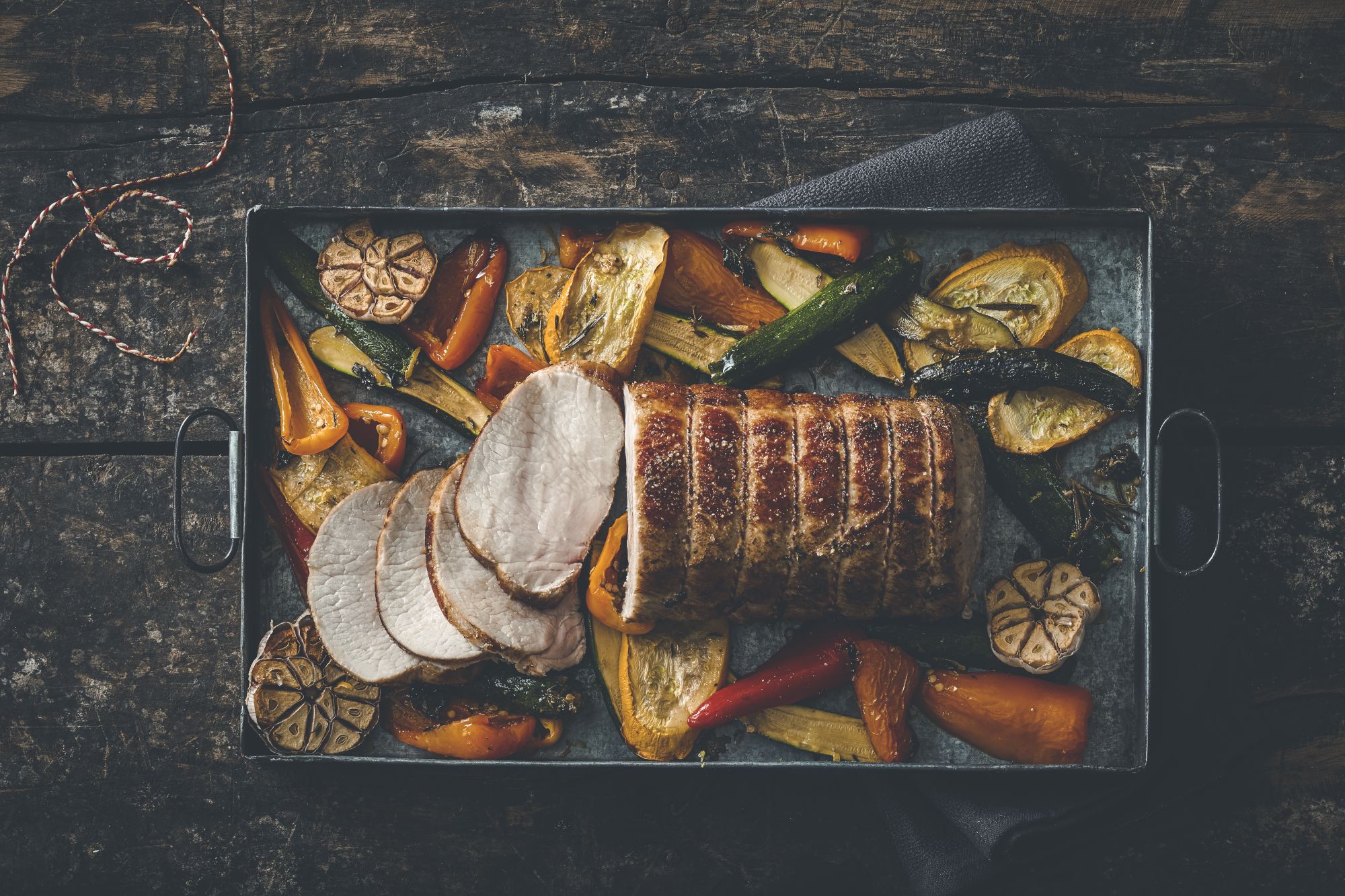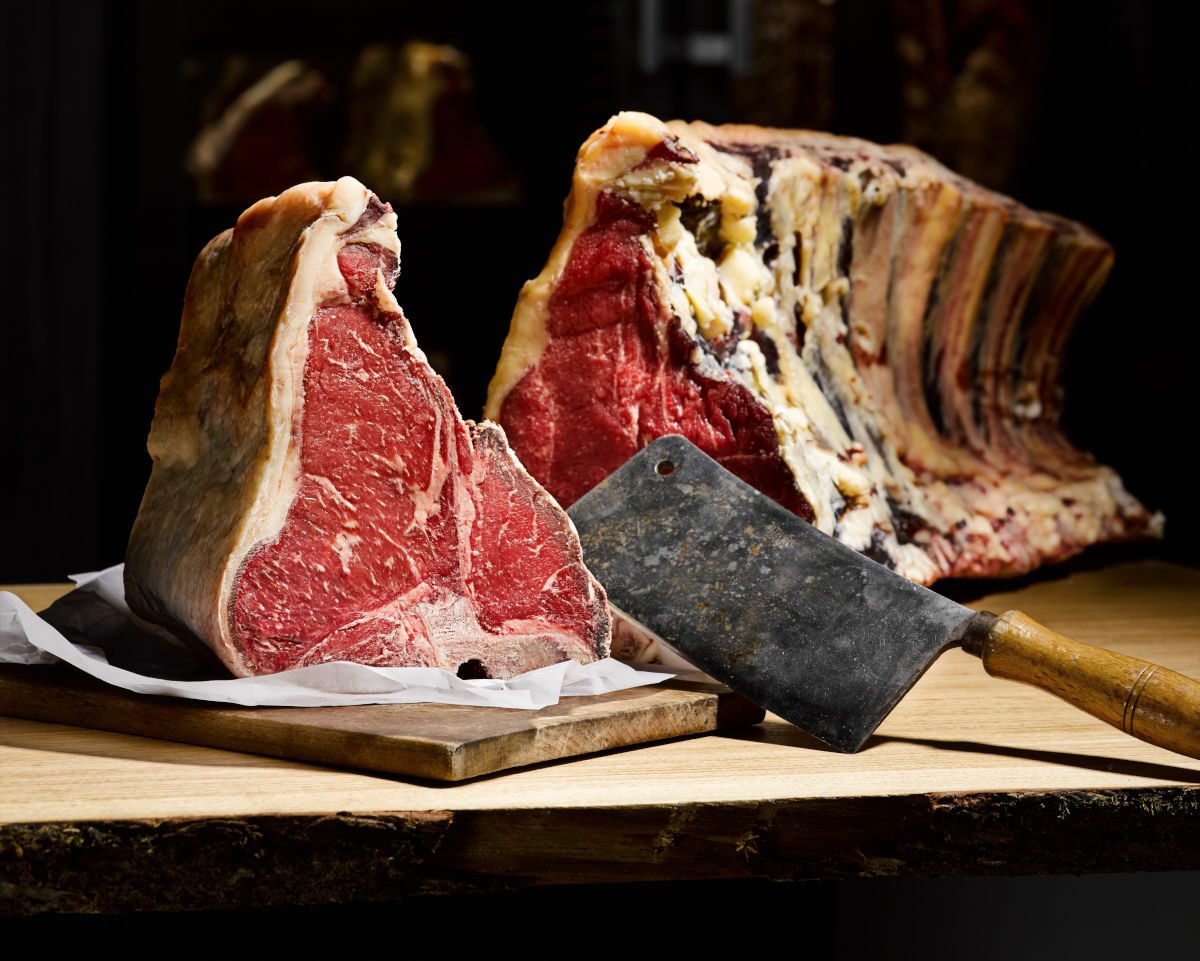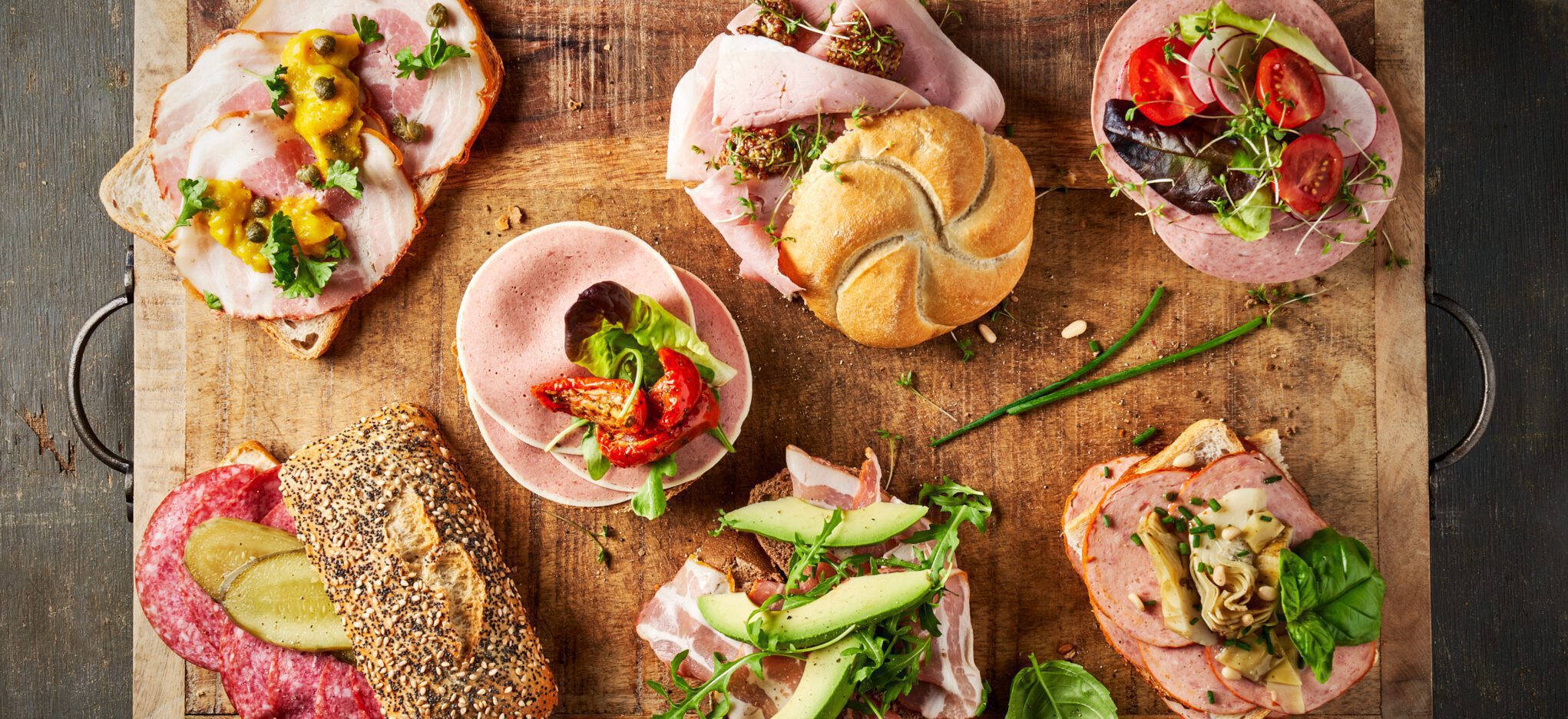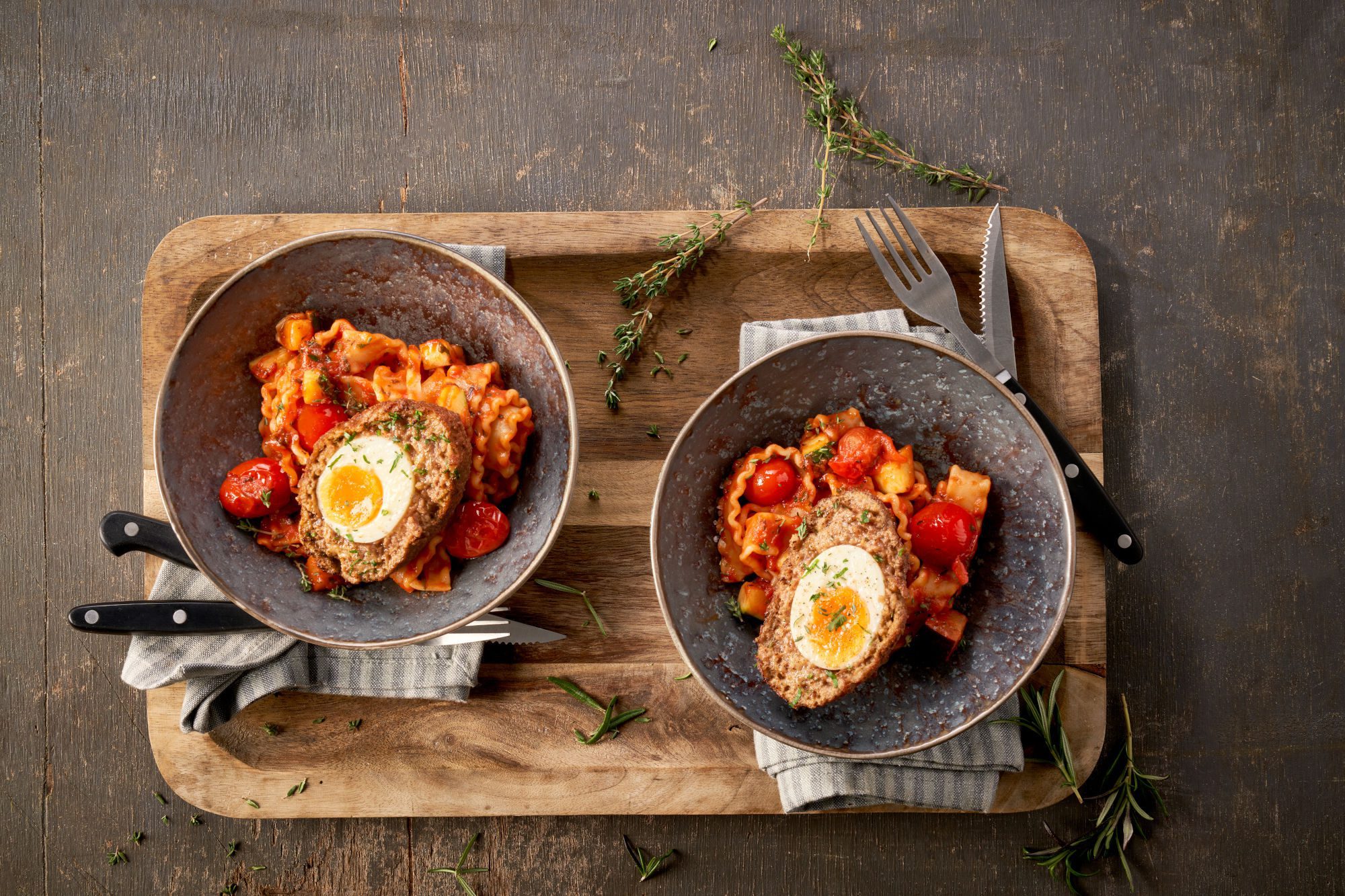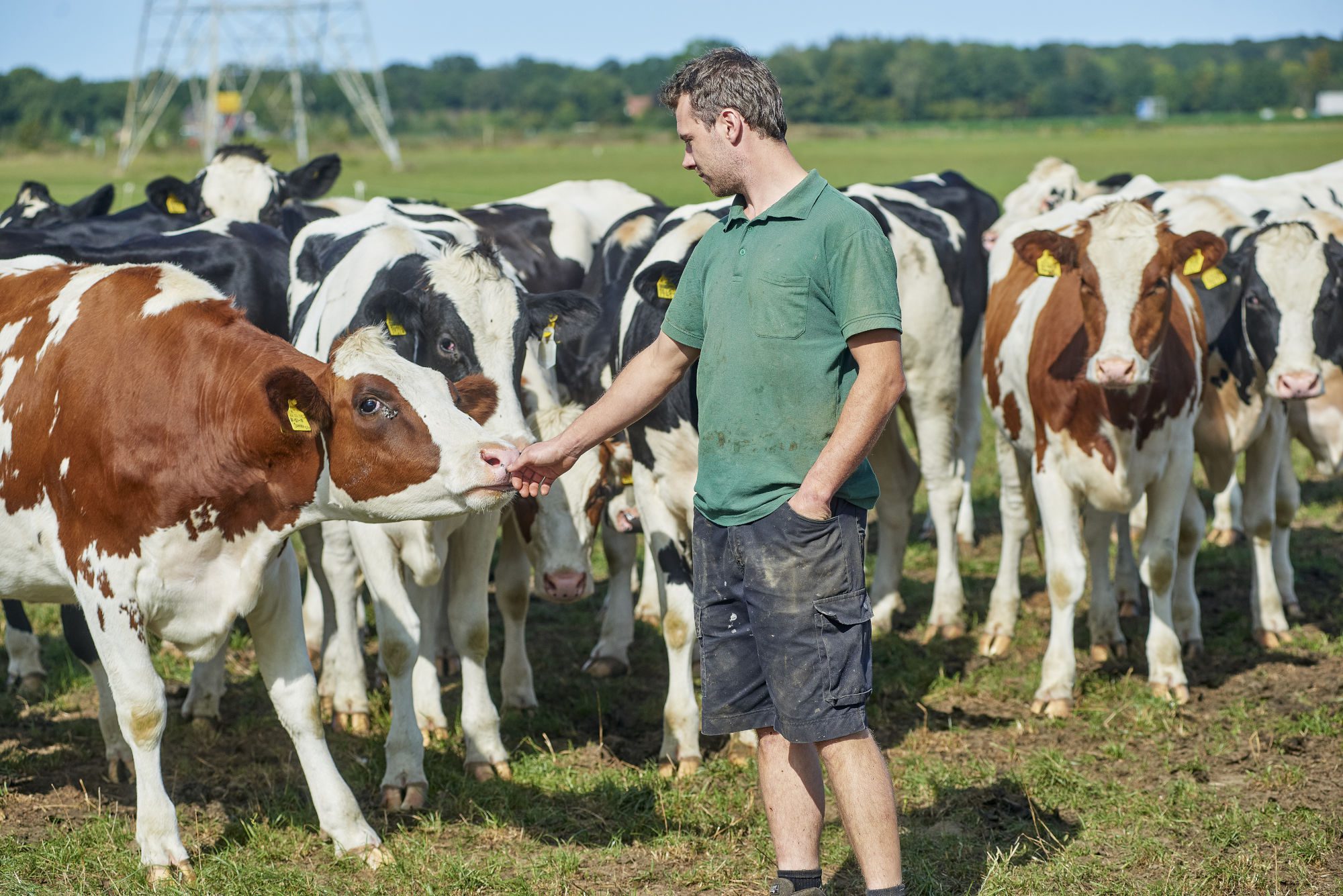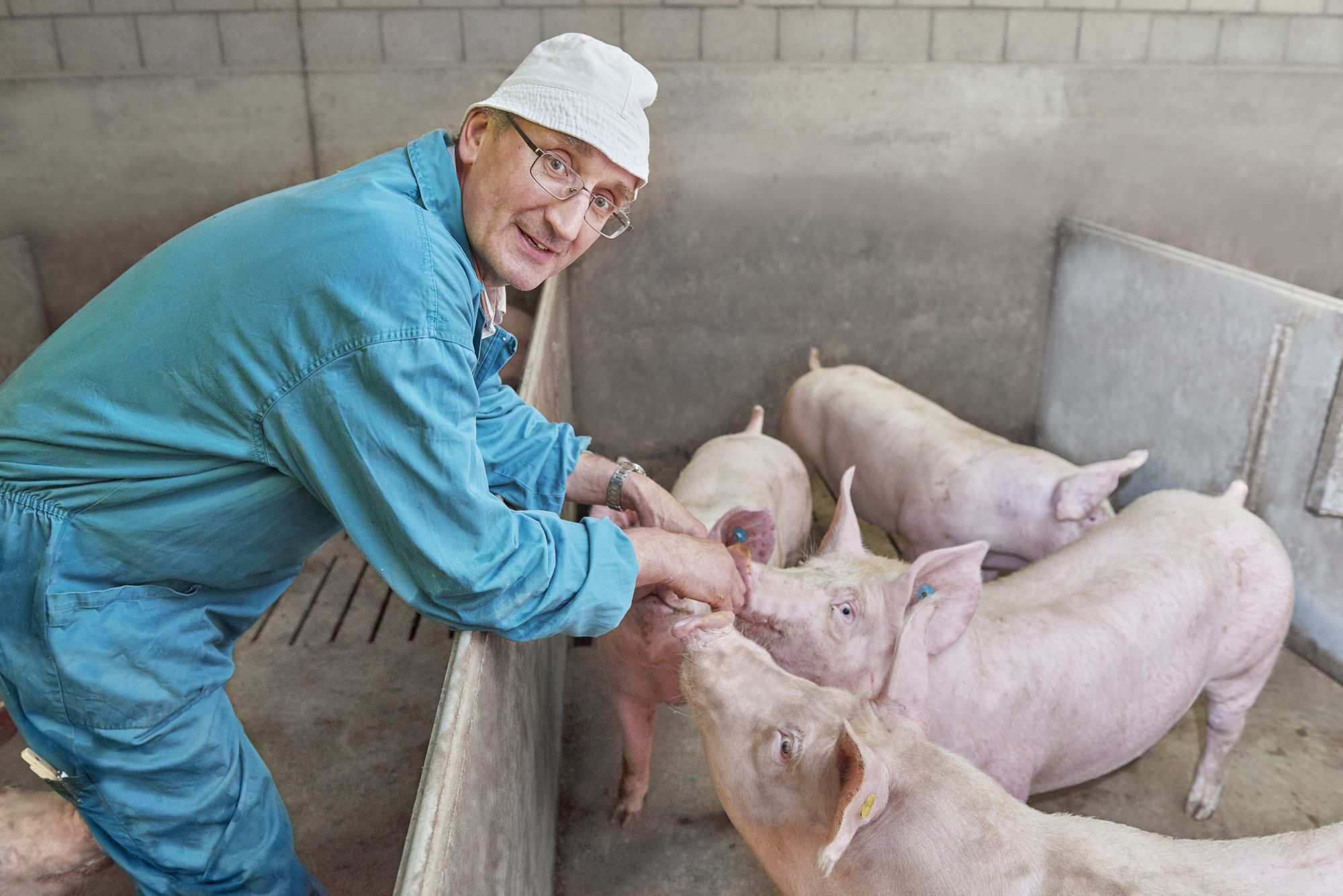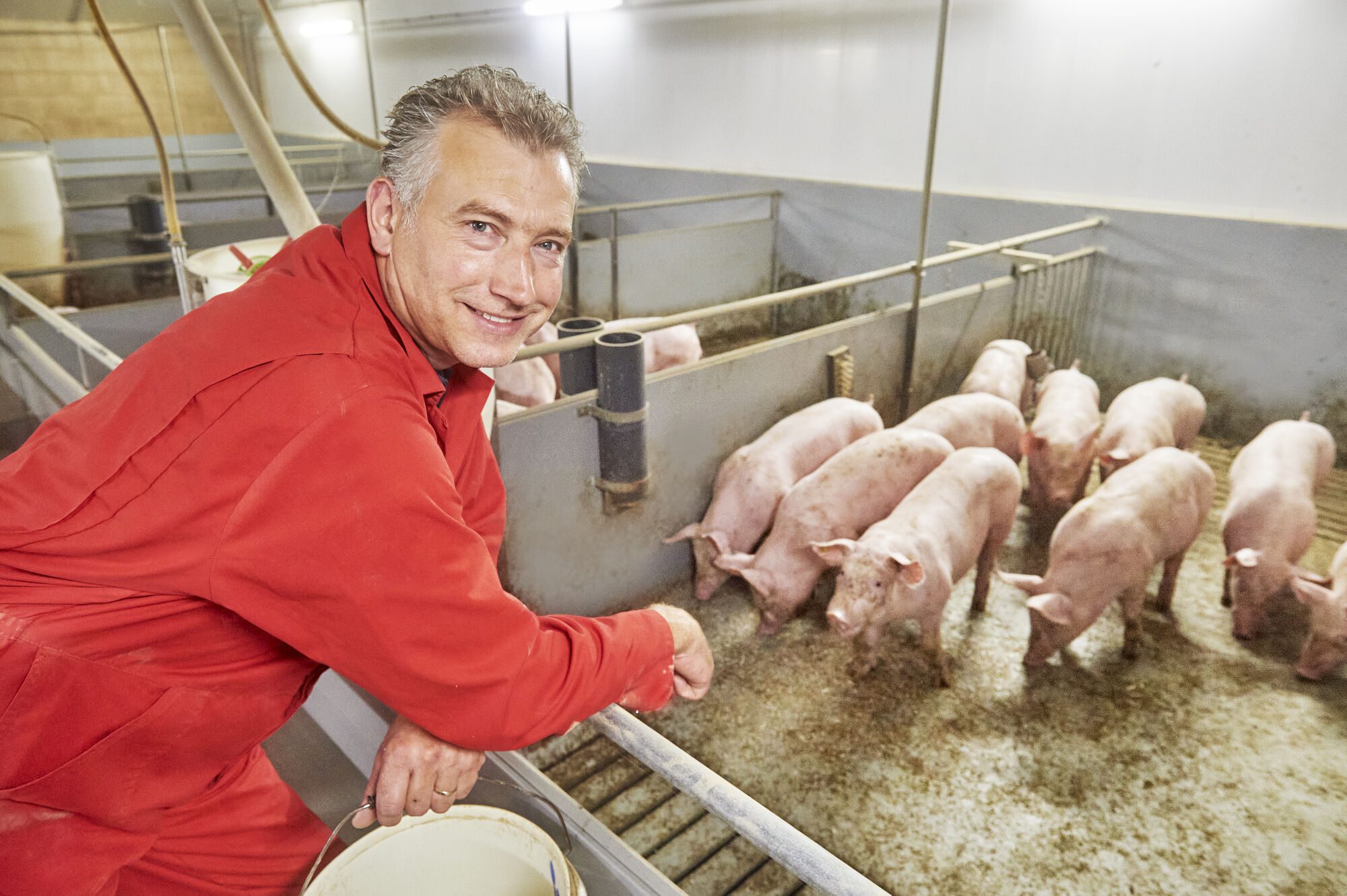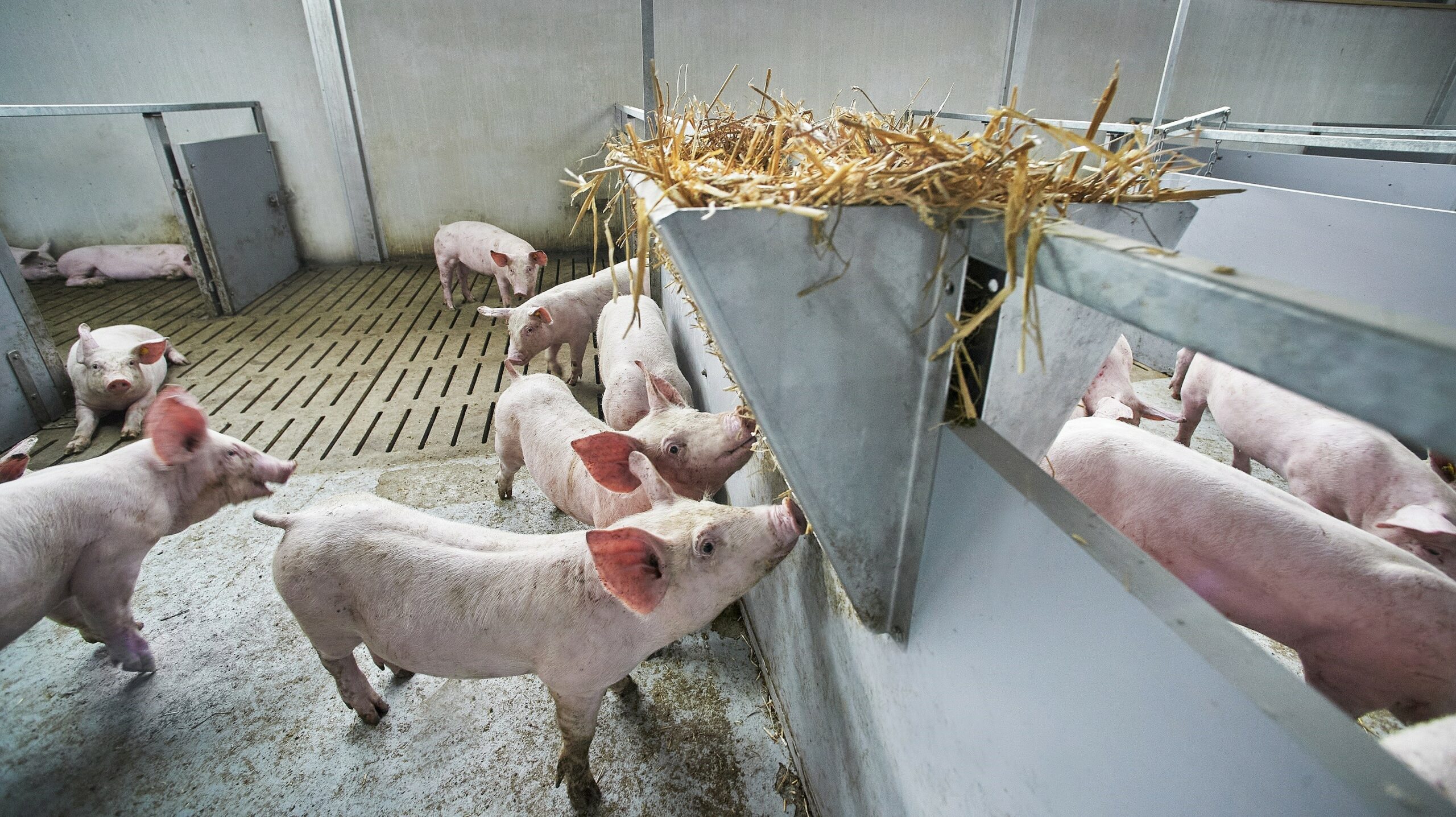Vion is the first to succeed in calculating the CO2 footprint of pork from a large group of pig farmers at farm level with actual data. Vion initiated and commissioned the development of the CO2 footprint calculator, which was developed together with data company ImpactBuying. It uses the calculation method published by Wageningen University & Research (WUR) for pork. With this calculator, Vion provides insight into the total CO2 emissions in the production chain of pork products, from the seed for the cattle feed to the transport of the final product to the shop. This allows Vion to work with pig farmers, transporters and retail organisations on measures to reduce the CO2 footprint in the chain.
Throughout the meat production chain, greenhouse gases are emitted at various stages, mainly CO2 and methane (CH4). Less than 3% of these relate to the process at Vion and energy use in production. The vast majority of the remaining more than 97% emissions occur in the phases before slaughter. That part of the chain is where many of the opportunities to further reduce the footprint lie.
Cooperation throughout the chain
Only through cooperation with all chain partners can emissions be identified and reduced at each step. In 2019, Vion took the first step. Together with a group of pig farmers, a start was then made to calculate emissions in pig farming. This was subsequently joined by cattle feed producers, government agencies and retail organisations.
Transparency thanks to European standard
Emissions throughout the pork chain are calculated with the help of WUR. The first step is to draw up an LCA, a Life Cycle Assessment, which meticulously maps each step in the chain. Here, calculations are made according to the European standard for calculating a carbon footprint of products, the Product Environmental Footprint (PEF). This PEF standard is the basis for a fully transparent and objective calculation developed for all of Europe.
Emissions from the total pork chain
Collaboration across the chain is key. It involves many partners and large amounts of data to be collected, verified and processed. This is the specialism of development partner ImpactBuying. The cooperation and deployment of the CO2 footprint calculator have now resulted in the total CO2 footprint of Vion pork production for Dutch retail being made visible. With primary data coming directly from all partners and via JoinData in the blockchain traceability platform designed by ImpactBuying and Vion. This provides an extra layer of trust and verified evidence. Work is currently underway to calculate footprints for the years 2022 and 2023.
Sustainability information to consumers
The demand for transparency on the CO2 footprint of food comes largely from retail. Supermarkets find it important to give their customers information about the sustainability of their products on packaging. The results of the CO2 footprint calculator make that possible.
Available for the entire food industry
Demands for more transparency on the food industry’s CO2 footprint are growing. Understanding the carbon footprint is essential to work on measures to protect the environment and climate. Ronald Lotgerink, Chief Executive Officer of Vion: “We have high sustainability ambitions at Vion and the development of the CO2 footprint calculator fits in very well. We also see the development as a successful pilot for the entire industry. Both ImpactBuying and Vion believe it is important that other producers also start using the CO2 footprint calculator. As initiator and client, we are proud of the impulse we are thereby giving to the sustainability ambitions in our chains.”
